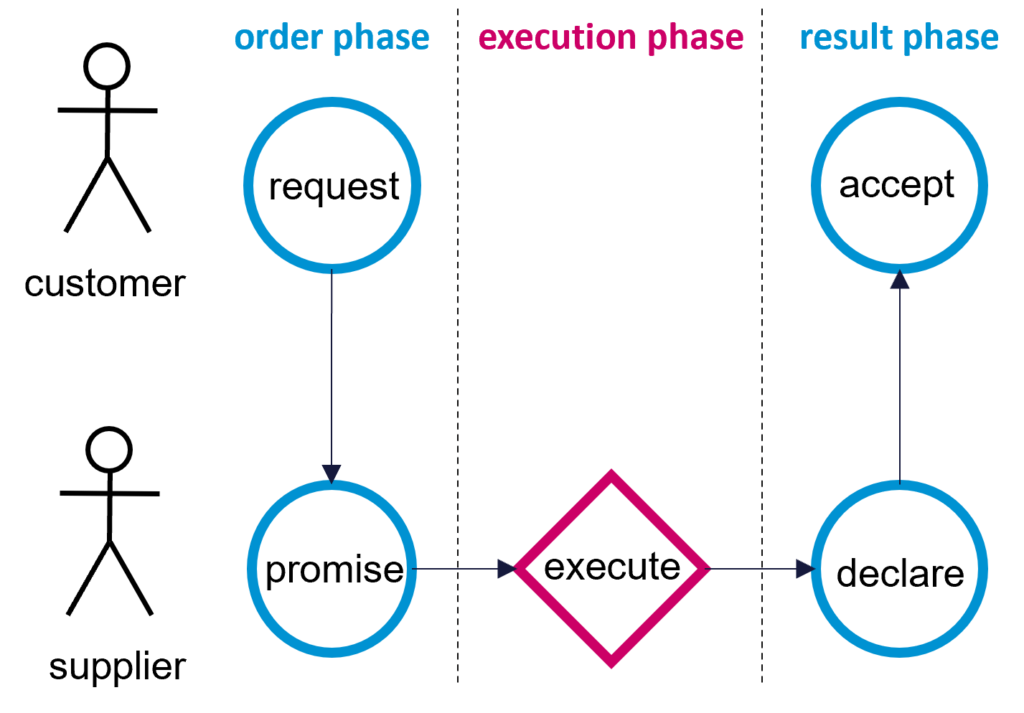In an earlier blog, I showed that the operation of an enterprise consists of two different kinds of activities: production and coordination. Production is about making things, either tangible or intangible. Coordination is the communication or interaction regarding such a product; coordination ‘surrounds’ production. Together, this is called a transaction that follows a specific though generic pattern. In this blog I will further detail the concept of a transaction, the phases that it goes through and the basic transaction pattern as well as the benefits of thinking in transactions.
What is a Transaction
Every transaction is aimed at the production of a thing and involves two actors (human beings): the initiator or customer, and the executor or supplier. The initiator is the one interested in (getting) the product, the executor is responsible for creating or delivering the product.
Transaction Phases
A transaction in general proceeds through three phases:
- The order phase is the phase in which the initiator and executor talk about the product to be produced by the executor. Details to be discussed can regard the physical product such as the toppings of a pizza, but also delivery time, payment, etc.
- When the initiator and executor have made an agreement, in the execution phase the executor produces the product. Note that this product may be different from the product as agreed upon in the order phase.
- The result phase is the phase in which the initiator and executor talk about the produced result so that the initiator can accept it. When for example a customer notices the pizza baker forgot a topping, they can discuss whether the pizza should be remade, or whether a partial refund is made.

Basic Transaction Pattern
A successful transaction follows the pattern in which a product is requested, promised, executed (produced), declared and accepted (shown above). The declare step is mainly important for intangible products, as there might not be a way for the initiator to know whether the product is ready. The accept step provides a way for the supplier to explicitly know that the customer has received the product and is happy with it. A successful transaction is thus a closed-loop, where both parties have agreed upon the product to be created and later on that the product is delivered to satisfaction of the customer.
Benefits of Using the Transaction Pattern
The basic transaction pattern as outlined before is generic: every product created in an enterprise, and all communication performed around it, can be captured with this generic pattern. The pattern is also complete, in the sense that nothing is missing: it contains everything that is needed to come to a successful transaction. As I will show in the next blog in this series, the complete transaction pattern includes all possible exceptions as well. The pattern therefore forms the basic structural component of an enterprise, that describes the operation in terms of production and communication between two actors.
In a next blog I will dive into the details of each communication act, and show the alternative paths of the transaction pattern.

Comments (0)